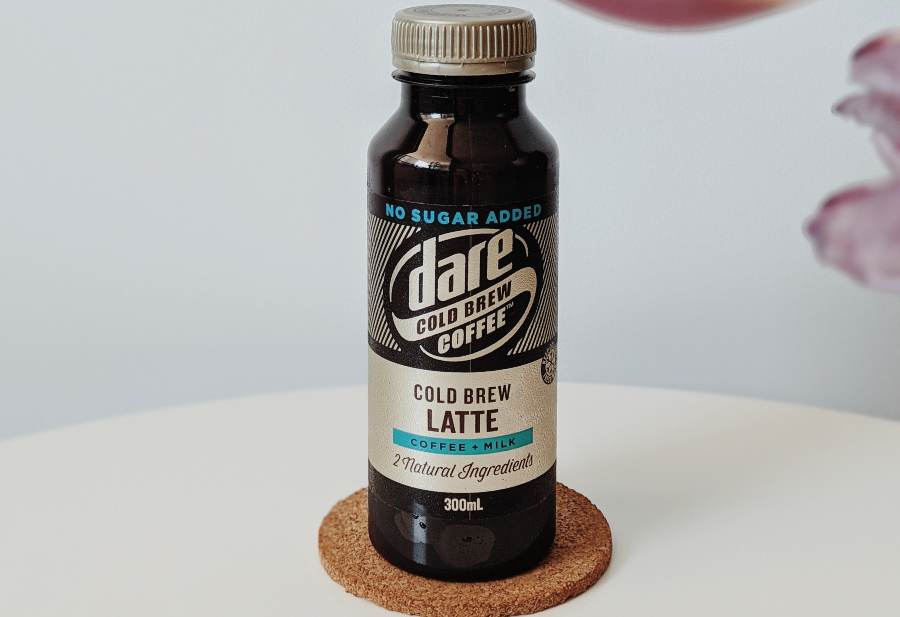
Summer is around the corner and there is no better way to hydrate and energize than sipping on a delicious cup of cold brew coffee.
Cold brew coffee is nothing new but for some reason, it has emerged as one of the hottest trends with its popularity expected to skyrocket in the coming years.
For example, the cold brew market in the US alone is estimated to increase to about $944.16 million by 2025, up from $166 million in 2017.
Cold-brew provides the much-acclaimed revitalizing benefits of coffee as well as its mouth-watering flavors without the bitterness that is inherent in coffee. Now you can see why drowning a sweet and smooth cup of cold brew coffee on a sweltering day is an excellent choice.
Making a cold brew involves using more ground coffee than hot brew coffee and steeping for 12-24 hours. Consequently, some people may be concerned about the caffeine content in cold brew coffee.
Does cold brew coffee have more caffeine?
Yes, cold-brew contains more caffeine per ounce than regular coffee. Most cold brew concentrates have 26-100mg of caffeine per fluid once whereas an 8oz cup of regular coffee contains about 95mg of caffeine. The dilution ratio for cold brew can reduce the caffeine content of the final drink.
One of the most caffeinated coffee at Starbucks, espresso roast clover, has 24mg of caffeine per fluid ounce or 380mg in a 16oz cup which is way below the amount of caffeine per ounce in most cold brew concentrates.
The dilution ratio determines the final caffeine level in a cup of cold brew. The dilution ratio of cold brew concentrate to water ranges from 1:1 to 1:3 for extra-strong concentrates.
To make an 8oz cup of cold brew with the concentrate, you may need up to 4oz of the concentrate hence the caffeine content will be likely higher than that of a similar cup of hot brewed coffee. See the different ways to strain a homemade cold brew.
Therefore, although the amount of caffeine in ground coffee is fairly standard decaf cold brew coffee has way less caffeine than regular cold brew as it uses more ground coffee. Different brands of cold brew concentrates have different quantities of caffeine depending on the concentration.
For example, a 16oz cup of Starbucks ready-to-drink nitro cold brew has 280mg of caffeine. Stumptown ready-to-drink cold brew with milk (11oz) has one and a half times the caffeine in an 8oz cup of regular coffee.
The chart below shows the caffeine content of some popular cold brew coffee brands.
| Popular Cold Brews | Caffeine Content |
|---|---|
| Nitro cold brew ready-to-drink | 280mg per 16oz |
| Chameleon cold brew concentrate | 65mg per fluid ounce |
| Chameleon on-the-go | 150-250mg per bottle. The bottles range from 8-11oz |
| CoolBrew Concentrate | 50-100mg per fluid ounce |
| Stumptown nitro cold brew concentrate | 26.57mg per ounce. Comes in 10.5oz bottles |
| Kohana coffee concentrate | 50mg per fluid ounce |
| Kohana ready-to-drink cold brew | 82-117mg per 8oz can |
| Califia cold brew concentrate | 45mg per fluid ounce |
| Stok cold brew ready-to-drink | 120-170mg in 12 or 13.7oz bottles |
A study has shown that when making a cold brew, most of the available caffeine in ground coffee is pulled at steeping times of around six and a half hours.
The study that used equal amounts of ground coffee and water to make cold brew and hot brew coffee showed that there was no significant difference in the level of caffeine in both brews.
One thing we need to stress is that the study used the same coffee ratio for both brews.
This confirms that although caffeine extracts poorly in cold water, the longer steeping times and higher coffee ratio in cold brew coffee overcome the temperature challenge. The cold brew ends up with more caffeine than a hot brew that uses less ground coffee.
Does Cold Brew have more Caffeine than Iced Coffee?
Yes, a cup of cold brew coffee has more caffeine than a similar cup of iced coffee. Iced coffee is hot coffee that has been cooled rapidly with ice whereas cold brew coffee is steeped for 12-24 hours at a higher coffee ratio.
Iced coffee has the same amount of caffeine as the original hot coffee before adding ice. Therefore, on average, iced coffee from double espresso will have about 130mg of caffeine and an 8oz cup of drip iced coffee will have about 95mg of caffeine.
Does Cold Brew have more Caffeine than Espresso?
Although espresso is stronger and more caffeinated per fluid ounce than cold brew coffee, the serving size for a cold brew is larger than espresso which means more of the cold brew and more caffeine per cup than espresso.
Espresso uses a coffee ratio of 1:2 whereas cold brew uses between 1:5 and 1:8 coffee ratio and, therefore, espresso is more intense than cold brew.
Cold-brew is served in 8-16oz cups, sometimes even bigger, whereas only 1-3oz of the espresso is used in espresso drinks.
For example, a single espresso shot at Starbucks has 75mg of caffeine but only up to 3 shots (225mg caffeine) are served in an espresso-based drink, Starbucks nitro cold brew on the other hand is served in up to 16oz cups at 280mg of caffeine.
The cold brew is smoother and sweeter as it uses cold or room temperature water that does not extract the bitter flavors unlike the hot water in espresso. Espresso is popular for its crema and intense flavor and aroma.
Does Nitro Cold Brew have more Caffeine?
Yes, on average nitro cold brew coffee has more caffeine than regular coffee due to the higher coffee ratio and longer brewing time. The nitrogen infusion adds a creamy texture, cascading appearance, and a frothy top when the cold brew is served and has nothing to do with the caffeine level.
A great example is the Starbucks 16oz nitro cold brew that has 280mg of caffeine as compared to its caffè Americano 16oz (3 espresso shots) that has 225mg or the caffè latte 16oz (double shot) that has 150mg of caffeine.
However, some Starbucks coffees are quite highly caffeinated. For instance, 16oz cups of Starbucks blonde roast and Pike place roast coffees have 360mg and 310mg of caffeine respectively which is higher than the caffeine in nitro cold brew.
Furthermore, a 16oz cup of espresso roast clover has 380mg of caffeine and is the most caffeinated drink at Starbucks.
See the caffeine content that can cause problems such as diuresis.
Factors that Influence the Caffeine Content in Coffee
The caffeine content in coffee is varies depending on various factors such as
- Coffee species. Robusta coffee has about twice the caffeine of Arabica coffee.
- Brewing method. Different methods of making coffee use different coffee ratios, water temperature, and duration. Caffeine is highly soluble at high temperatures, however, increased steeping times at low temperatures improve the extraction of caffeine. Steeping coffee grounds in cold water for about 400 minutes has been found to extract most of the available caffeine. Coffee ratio is one of the biggest factors when it comes to caffeine. The more the amount of ground coffee per ounce of water, the higher the caffeine. Espresso machines utilize high pressure, high temperature, and a higher coffee ratio to yield coffee with a high caffeine content per fluid ounce.
- Chocolate-covered beans. Coating coffee beans with chocolate that is also caffeinated adds to the overall caffeine level in chocolate-covered beans can be as high as three times the level in Arabica beans.
- Blends. Some espresso coffee beans are blends of Arabica and Robusta at different ratios. The caffeine content depends on the ratio of blending
- Grind. The grind size affects the rate at which water flows through the coffee. Finer grinds are likely to yield more caffeine as water flows through the grounds much slower than coarse grinds
See this article about whether coffee’s caffeine level reduces over time.
Cold brew coffee is not only delicious and smooth but also a great choice when you want to make a hot coffee from the cold brew.

